Over time, individuals engaged in deep water culture (DWC) systems may encounter various challenges that can hinder plant growth and reduce their yields. They must be aware of 5 common DWC problems, including nutrient imbalances, pH fluctuations, and root rot, to ensure a thriving hydroponic garden. By understanding these issues and implementing effective solutions, growers can maintain a healthy environment for their plants and achieve positive results. This post provides practical advice for identifying and addressing these common pitfalls in DWC setups.
Key Takeaways:
- Maintain optimal water temperature to prevent root rot and ensure healthy plant growth.
- Regularly monitor and adjust pH levels to avoid nutrient lockout and keep plants thriving.
- Implement proper air circulation and oxygenation to prevent issues such as stagnant water and root suffocation.
- Inspect and clean nutrient reservoirs and hoses to prevent algae buildup and ensure efficient nutrient delivery.
- Be vigilant in checking for pests and diseases, acting quickly to address any infestations or health problems in plants.
The Silent Threat of Root Rot
Recognizing the Early Signs
Root rot can stealthily wreak havoc on a hydroponic garden, often going unnoticed until it’s too late. Early detection is paramount for mitigating its impact. Signs such as yellowing leaves, wilting, and stunted growth can indicate that something is amiss. Additionally, if a gardener notices an unpleasant, musty odor coming from the nutrient reservoir or around the base of the plants, it could signal the presence of root rot pathogens, which thrive in overly moist conditions. In some cases, the root system may appear slimy or discolored when examined, confirming the suspicion of root rot.
Another subtle yet telling sign is the failure of the plant to uptake nutrients properly. Nutrient deficiencies often manifest as dark patches or burnt tips on the leaves. In DWC systems, such symptoms can arise rapidly when the roots are compromised, highlighting the need for regular monitoring of the plant’s overall health.
Effective Prevention Techniques
Proactive measures are vital for keeping root rot at bay in a deep water culture system. Maintaining *optimal water temperature* between 65°F and 70°F can help ward off pathogens, as many thrive in warmer conditions. Additionally, ensuring proper oxygenation of the water is critical. Using air stones or pumps to enhance dissolved oxygen levels in the nutrient solution will not only support healthy root development but also help to inhibit harmful microorganisms, thereby reducing the likelihood of rot.
Incorporating beneficial bacteria into the nutrient solution can also serve as a natural defense against root rot. Products containing species like *Bacillus subtilis* have been shown to outcompete harmful pathogens and create a healthier root environment. Regular inspection and cleaning of the tank and tubing can eliminate debris, which often harbors harmful bacteria and fungi. Investing in a quality filtration system may further help maintain water cleanliness, effectively preventing conditions that foster root rot.
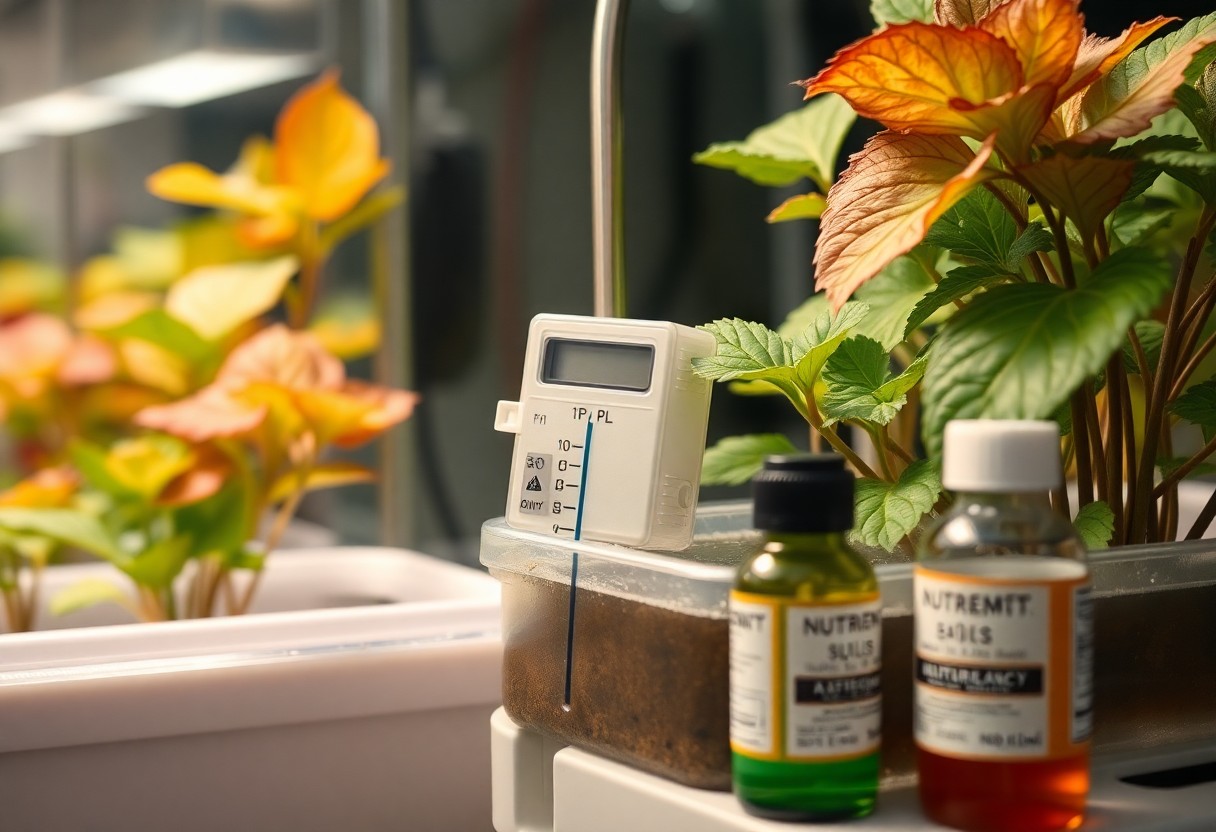
Nutrient Imbalance: The Invisible Issue
Nutrient imbalances are often referred to as the silent killers in the world of Deep Water Culture (DWC). They can produce vague symptoms that sometimes even experienced growers fail to pinpoint. A common scenario occurs when a grower notices a lack of vitality in their plants but overlooks nutritional deficiencies, attributing the issue to lighting or water quality instead. Nutrient solutions must be carefully balanced; excess or deficiency of specific elements can lead to stunted growth, yellowing leaves, or even plant death.
Symptoms of Nutritional Deficiencies
Identifying nutritional deficiencies can be tricky since the signs often mimic other plant stressors. For instance, yellowing leaves might signal nitrogen deficiency, while purple leaves can indicate not enough phosphorus. In some cases, a lack of potassium manifests in browning leaf tips, creating confusion for those unaware of the specific nutrient needs of their plants. In any event, while symptoms might vary, attention to these signs is fundamental for a successful DWC system.
For new and seasoned growers alike, understanding these subtle cues can be the difference between bumper yields and dismal harvests. Conducting a careful diagnostic assessment often proves beneficial; this involves comparing symptoms against known deficiencies, examining plant growth stages, and looking at environmental conditions to decipher the true source of the issue.
Adjusting pH and TDS Levels
pH and TDS (Total Dissolved Solids) levels are pivotal in maintaining nutrient balance within the DWC system. A pH too high or too low can hinder nutrient uptake, even if the solution is otherwise balanced. Ideally, the pH level for most hydroponic plants falls between 5.5 and 6.5. An imbalance here can lead to nutrients precipitating out of the solution, effectively locking them away from the plant roots.
Additionally, monitoring TDS levels helps evaluate nutrient concentration within the water. A high TDS reading may indicate nutrient burn, while low readings can signify deficiencies. Keeping TDS within a suitable range not only ensures that plants receive the right amount of nutrients but also allows for a more stable growth environment. Regularly testing both pH and TDS can mitigate potential problems before they escalate, ensuring that plants thrive.
Adjusting pH and TDS levels involves the use of specific solutions designed for hydroponic systems. If pH drifts outside the optimal range, using pH up or down solutions can quickly bring it back to a desirable level. For managing TDS, growers can dilute or concentrate the nutrient solution accordingly. Moreover, frequent water changes and the use of quality monitoring equipment can aid in keeping both parameters within desired levels. Maintaining these crucial aspects not only fosters healthier plants but also promotes robust growth and higher yields.

Algae Overgrowth: How to Spot and Stop It
Identifying Algae Types and Impact
Algae can manifest in various forms, often indicating underlying issues in the DWC system. Common types include green algae, blue-green algae, and brown algae, each posing distinct threats. Green algae, while typically harmless, can lead to reduced light penetration, impacting plant growth. In contrast, blue-green algae may release toxins harmful to both plants and aquatic life. Brown algae often develop in nutrient-rich conditions, creating a sludge that can choke off plant roots.
| Algae Type | Impact |
| Green Algae | Reduces light penetration |
| Blue-green Algae | Toxins harmful to plants and fish |
| Brown Algae | Creates sludge, choking roots |
| Diatoms | Can indicate water quality issues |
| Filamentous Algae | Blocks light and oxygen flow |
Taking action against any of these algae types is necessary for optimal growth and health of the plants. Regular inspection of the water surface and the growing medium can help he identify any signs of overgrowth early, enabling him to implement effective management strategies.
Implementing Effective Control Methods
Controlling algae growth within a DWC system demands a multi-faceted approach. Maintaining water quality is the first line of defense; a balanced nutrient solution is necessary to prevent algae from dominating the ecosystem. Regularly checking pH levels and nutrient concentrations helps keep algae proliferation in check. Providing adequate shading, either through physical barriers or adjusting light cycles, stops excessive sunlight from reaching the water surface, where algae thrive.
Utilizing beneficial bacteria can also create a more balanced environment. These microbes outcompete algae for nutrients, reducing their chances to flourish. Regularly cleaning the system, including the reservoir and net pots, prevents excess organic material that serves as food for algae. Introducing specific wavelengths of light that inhibit algae growth can be another effective strategy. Engaging in these practical steps ensures that algae remain a minimal concern in her DWC system.
Pump Problems: When Your System Fails
Diagnosing Pump Malfunctions
Pump malfunctions can arise from several issues, including mechanical failures, obstructions, or electrical problems. A common indication of a failing pump is a noticeable decrease in water flow. If a grower observes that plants are not receiving adequate nutrient solutions, it is wise to check the pump’s performance first. Listening for any unusual noises such as buzzing or grinding provides further insight; a healthy pump typically operates silently and efficiently. Additionally, checking for leaks around the pump can uncover issues that may compromise water circulation.
Preventative Maintenance Strategies
Consistent and proactive maintenance is important for pump longevity. Performing routine checks can prevent unexpected failures that disrupt a DWC system. A good practice is to schedule regular inspections, ideally on a monthly basis, to clear any debris from the pump and its intake. Ensuring that the pump is properly submerged according to the manufacturer’s guidelines aids in optimal performance as well.
Establishing a cleaning routine is another effective strategy. Cleaning the pump and its components thoroughly every few months helps to prevent mineral buildup or algae growth that may impede functionality. Using distilled water for the initial rinse can help minimize the deposit of calcium or other mineral residues that tap water might introduce. Additionally, investing in a backup pump can provide peace of mind, as it can be quickly installed if the primary pump fails, safeguarding the plants’ health in critical situations.
Utilizing pressure gauges can also alert growers to shifts in performance metrics. Abnormal readings may indicate impending pump issues that can be addressed before causing major disruptions. Dedicated growers often keep a maintenance log, noting when filters were changed or when a pump received service, ensuring thorough oversight of their system’s health.

Leaks and Equipment Failures: A Costly Dilemma
Detecting Hidden Leaks
Uncovering the source of hidden leaks in a Deep Water Culture (DWC) system can feel like finding a needle in a haystack. Water pooling around the base of the system or unusual drops in reservoir levels without visible signs often indicate a leak. To effectively locate these elusive leaks, implementing a methodical approach works best. Checking connections, joints, and seals with a solution of soap and water can reveal the location of leaks as bubbles form as air escapes. Using specialized leak detection tools, such as ultrasonic leak detectors, provides a more high-tech solution by identifying the sound of air escaping even through small cracks.
In some cases, the leak may not be from the water system at all but linked to equipment failures. Daily inspections of pumps and fittings can help spot potential weaknesses before they result in costly spills. A combination of vigilance and proactive monitoring ensures that the leaks are detected early, minimizing damage and maintaining the integrity of the DWC setup.
Quick Fixes and Long-term Solutions
For immediate fixes of leaks, applying plumber’s tape or silicone sealant around fittings or cracks often provides a temporary solution that can hold until permanent repairs are made. Utilizing adjustable hose clamps on loose connections can also help eliminate some leaks quickly. However, these quick fixes should not serve as a substitute for thorough inspections and addressing the root cause of the issue, which can often lead to recurring problems if left unresolved.
Implementing long-term solutions involves overhauling the affected areas by replacing faulty components entirely or upgrading the materials used in key parts of the system. High-quality, durable fittings and water-resistant tubing can drastically reduce the risk of future leaks. Regular evaluation of equipment, along with preventative maintenance protocols, is a key strategy to enhance system longevity and minimize the likelihood of equipment failures.
Pest Infestations: Protecting Your DWC Setup
Common Pests That Target Hydroponics
Pests can wreak havoc on a DWC (Deep Water Culture) system, diminishing plant health and yields. Common offenders include aphids, which feed on plant sap, causing stunted growth and yellowing leaves. Spider mites are another prevalent issue; they are tiny, almost invisible arachnids that leave fine webbing and cause leaf discoloration. Thrips, fungal gnats, and whiteflies are also frequent intruders, each carrying the potential to damage crops significantly. Preventing these pests from taking root is necessary for a flourishing hydroponic environment.
Plants in a DWC setup can also attract mealybugs, characterized by a white, cottony fuzz that clings to stems and leaves. This pest can weaken plants and lead to further complications, including black sooty mold. Identifying these pests early is key. Regular inspections, particularly under leaves and near the base of the plants, can assist growers in catching infestations before they escalate.
Integrated Pest Management Approaches
Implementing Integrated Pest Management (IPM) combines cultural, biological, and chemical strategies for effective pest control. For instance, keeping the growing environment clean and maintaining proper air circulation can reduce pest attraction. Introducing beneficial insects like ladybugs or predatory mites can naturally keep pest populations in check, building a balanced ecosystem. Using physical barriers such as fine mesh screens can also contribute to the prevention of infestations.
IPM is not a one-size-fits-all approach; it requires monitoring and adapting strategies based on specific pest threats. Consistent evaluation of pest populations allows growers to choose the right interventions at the right times, minimizing chemical inputs while protecting plants. Maintaining a detailed pest management plan can empower growers to foster healthier plants and a more sustainable production method.
Climate Control Challenges: Creating the Perfect Environment
Temperature and Humidity Optimization
The balance between temperature and humidity forms the foundation of a successful deep water culture (DWC) system. Optimal temperatures for DWC typically range from 65°F to 75°F (18°C to 24°C). Temperatures above 75°F can lead to decreased dissolved oxygen levels in the water, which is vital for plant roots, while anything below 65°F risks stunting growth. On average, every degree raised in water temperature potentially results in a 10% decrease in dissolved oxygen capacity. This situation could be catastrophic for plant health, so maintaining this sweet spot is imperative.
Humidity levels also play a role in the overall health of the plants. Ideally, maintaining relative humidity between 40% and 70% can enhance nutrient uptake and photosynthesis. Humidity lower than 40% can introduce stress on the plants, whereas high humidity, particularly above 70%, might encourage mold and fungal growth. A simple rule of thumb they often use is to monitor humidity closely during the vegetative stage when plants require greater moisture and adjust it during the flowering stage to aid in effective transpiration.
| Factor | Optimal Range |
|---|---|
| Water Temperature | 65°F – 75°F (18°C – 24°C) |
| Relative Humidity | 40% – 70% |
Using Technology for Environmental Monitoring
Embracing modern technology can transform how individuals manage DWC systems, making it easier to monitor and maintain the necessary climate conditions. Sensors that track temperature, humidity, and dissolved oxygen levels have become increasingly accessible and affordable. Devices such as smart thermostats can provide real-time data and alerts to ensure conditions remain optimal without constant manual checks. This technology enables growers to react quickly to any fluctuations, preventing potential growth issues before they can develop.
Advanced modules even integrate with smartphone applications, providing a more comprehensive overview of the growing environment. For instance, the incorporation of environmental logging systems captures changes over time alongside automatic adjustments, which can simplify the task of climate control. Such advancements in technology not only aid in maintaining a healthy DWC ecosystem but also facilitate informed future decisions based on historical data trends.
As growers adapt to innovative solutions, the efficiency and yield of their DWC systems can significantly improve, proving that leveraging technology is a valuable investment in achieving sustainable growth.Final Words
Following this exploration of the five common DWC problems and their solutions, it becomes clear that gardeners can effectively address these issues to enhance their hydroponic growth. He or she should be diligent about monitoring pH levels and nutrient concentrations to prevent root problems, while also ensuring proper aeration to support healthy root systems. Additionally, maintaining a clean reservoir and monitoring water temperature are vital steps that they can take to avert algae growth and root rot, respectively.
By implementing the strategies discussed, anyone engaging with DWC systems can significantly reduce the likelihood of encountering these issues. She or he will gain a deeper understanding of their hydroponic environment, allowing for better crop yields and healthier plants. Ultimately, these preventative measures and solutions will empower them to cultivate thriving, robust systems, ensuring successful hydroponic gardening experiences.
FAQ
Q: What are the most common problems encountered with Deep Water Culture (DWC) systems?
A: The most common problems with DWC systems include root rot, nutrient imbalances, pH fluctuations, algae growth, and pump failure. Each of these issues can affect plant health and yield. Identifying and addressing these problems promptly is key to maintaining a healthy hydroponic environment.
Q: How can I fix root rot in my DWC system?
A: To fix root rot, first remove the affected plants and clean the system thoroughly. Ensure that the water temperature is kept between 65°F and 75°F. Consider adding beneficial bacteria or enzymes that promote root health to your nutrient solution. Additionally, ensure that there is proper oxygenation in the water by using air stones or diffusers to prevent future occurrences.
Q: What should I do if my nutrient solution has imbalanced levels?
A: If you find that your nutrient solution is imbalanced, test the levels of nitrogen, phosphorus, potassium, and other crucial nutrients. Adjust the mixture according to the specific needs of your plants and the growth stage they are in. It can help to do partial water changes to dilute the existing solution and bring levels back to the desired range.
Q: Why is my pH fluctuating, and how can I stabilize it?
A: pH fluctuations in DWC systems can be caused by nutrient interactions, microbial activity, or even water quality. To stabilize pH, regularly monitor levels and adjust as needed using pH up or pH down solutions. Additionally, using buffers can help maintain stable pH levels, and using distilled or RO water can reduce variability caused by tap water minerals.
Q: What causes algae growth in DWC systems, and how do I prevent it?
A: Algae growth is typically a result of excessive light exposure and nutrient availability in your reservoir. To prevent algae, keep nutrient tanks covered to block light and ensure good sanitation practices. Adjusting your nutrient concentration and increasing water circulation can also limit algae growth. If algae is already present, carefully clean the surfaces and consider using a UV sterilizer to help eliminate spores.
Q: My pump has failed. What steps should I take to remedy this situation?
A: If your pump has failed, first disconnect the power and check for any obstructions in the pump or tubing. Clean any debris and inspect electrical connections. If the pump is beyond repair, replace it with a new one that meets the required specifications for your DWC system. Regular maintenance and monitoring will help prevent future pump failures.
Q: How can I identify and address any pest infestations in my DWC setup?
A: Regularly inspect plants for signs of pest infestations, such as unusual spots, webbing, or visible insects. If pests are found, isolate affected plants to prevent spreading and treat them using organic pesticides or insecticidal soaps. Implementing preventive measures, like maintaining good air circulation and using beneficial insects, can also help keep pests at bay.

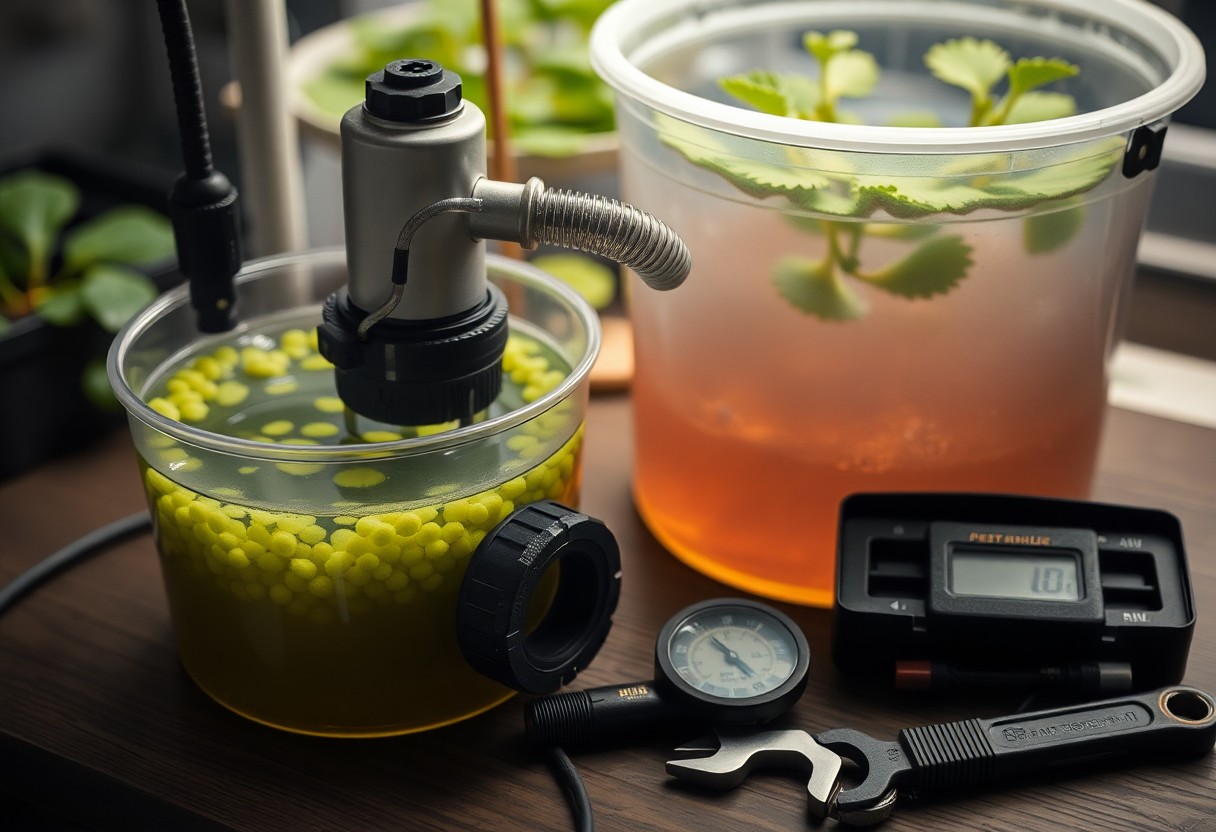
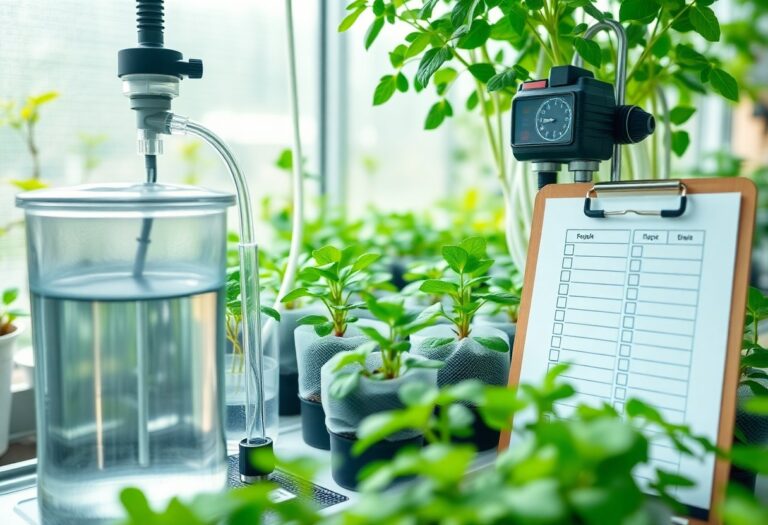
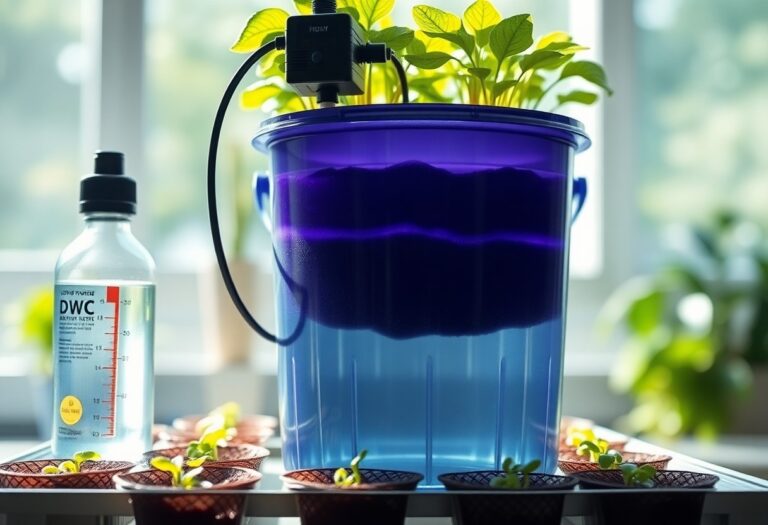
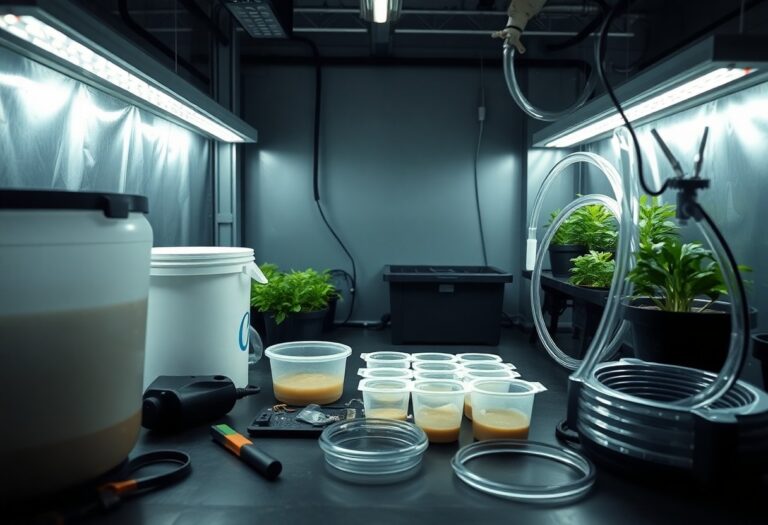
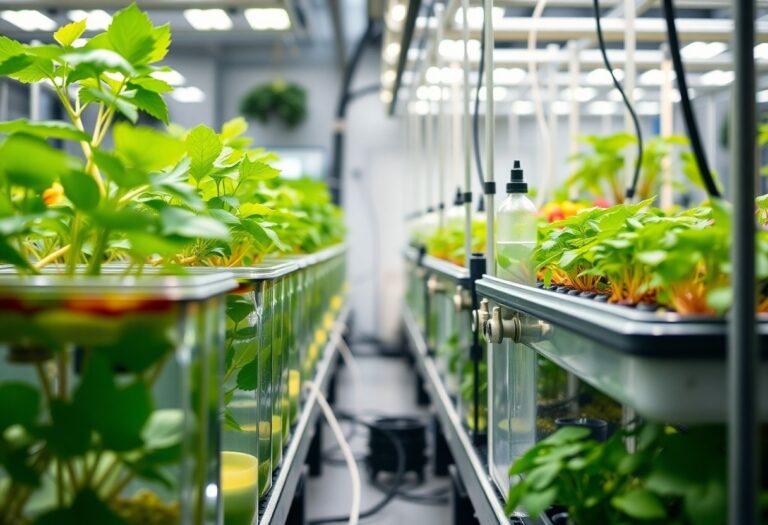
Leave a Comment